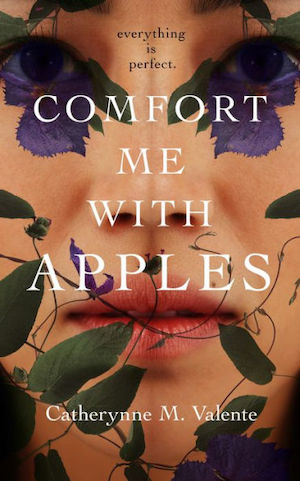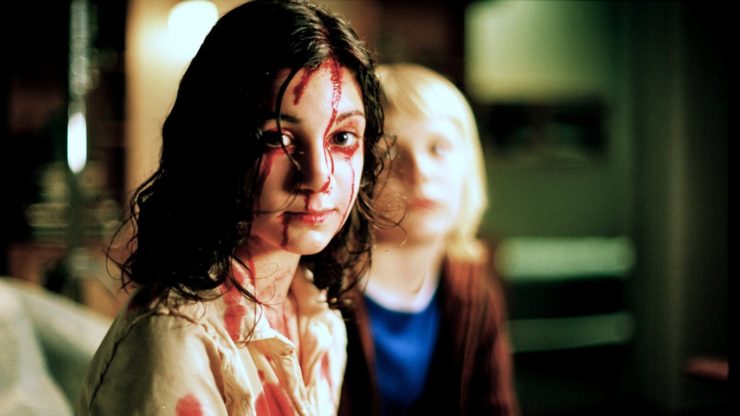For the longest time, I subscribed to the widely-held belief that household pets—your dogs, your cats, your pot-bellied pigs—were incapable of love. They were good simulators—millennia of domestication had permitted them to evolve behaviors that would bind us compassionate humans to them—but it was all surface, just physical traits and instinctual responses to make sure their dinner bowls were filled and their litter boxes were emptied.
I saw the logic in that. I felt that only humans had the self-awareness and capacity for empathy that would allow us to form loving relationships. But time passes and research into our animal brethren continues, and more and more my certainty is shaken. Elephants mourn their dead; corvids exhibit a sense of humor. Watch a video of a dog frolicking in the snow and tell me the animal isn’t experiencing joy. Their perceptions may differ—i.e. it’s suggested that dogs don’t so much “play” fetch as regard us as the thing that throws the ball so they may bring it back—but the more we observe, the more it appears that those lower down on the evolutionary ladder are not just libraries of automatic responses.
I’d also be satisfied with accepting that animals were incapable of love if anyone could provide a decent definition of what the fuck love actually is. We can say that an animal acts only in its self-interest, but we’re not completely pure in that regard either. Love is as complex and varied as humans overall. There is a lot that is admirable and noble—connecting with another person, giving beyond one’s own needs—but, yes, there are also those things that can slot into our instinctual mandates: propagation of the species, obviously; but also emotional validation; confirmation of identity; measure of value.
Love is both giving and greed, a dance between humanity’s highest aspirations and its simplest needs. And the best love stories take all those aspects into account.
F’rinstance: Imagine a young protagonist. This person is an outcast, reviled by classmates, misunderstood by adults. But this individual—by dint of that outsider status—draws the attention of another outcast, a creature of the night, compelled to survive on the blood of its victims. Despite being confronted with the dark nature of this suitor, somehow, through a shared status as pariah, our protagonist forms a bond with the predator…a bond that grows into something deeper, more profound.
(BTW: If you’re flashing now on Twilight, I want you to go to your room and think about what you’ve done.)
Buy the Book


Comfort Me With Apples
For the longest time, I subscribed to the notion that the Swedish horror film Let the Right One In (2008) wasn’t actually a love story. Oh, it has the structure of one: Oskar (Kåre Hedebrant), the perennial target of a clutch of vicious bullies at school, forms a growing relationship with Eli (Lina Leandersson), a mysterious child who lives in a neighboring apartment with boarded-up windows. The more Oskar gets to know Eli, the more he realizes that this child is different—that Eli, who appears to be a young girl, is actually a vampire, hundreds of years old, who sends the man posing as “father,” Håkan (Per Ragnar), out at night to harvest the blood of humans. Oskar is frightened, but also attracted, recognizing within Eli a kindred spirit. A connection forms between them, growing into love.
Or does it? I’ve seen Let the Right One In twice, once upon its debut, and again for this piece. And my impression after emerging from that first screening was to look askance at the whole “love story” thing. Part of that suspicion stemmed from Eli’s relationship with Håkan, what little we see of it. Håkan is an adult, on the north side of forty at least. He is not a vampire himself, and given Eli’s immortal status, he’s definitely not the child’s father. Of the major sequences between the two, one has Eli berating the man for botching an intended harvest, another has Eli caressing him in a way that suggests neither a father/child relationship nor even that of two lovers, but rather a master soothing a cherished pet. Later, Håkan will sacrifice himself to slake Eli’s hunger, and the child will not hesitate to feast upon him, to his death. What motivates Håkan may be love—midway through the film, he shows clear jealousy in Eli’s growing attachment to Oskar—but what Eli feels is less clear.
And it was that interaction that made me think that the film was not only a horror story, but also kind of a time travel story. If Eli has seen centuries pass, could Håkan have been the only human to have served this creature in this way? It is, I think, not out-of-bounds to wonder if what we see in the Eli/Håkan relationship is not a preview of Oskar’s fate: Eli puts a needy human—presumably a child—in thrall; the two companions survive as best they can, with the vampire prevailing upon the human to provide a steady stream of life-giving blood; and they continue that way over the years, moving from town to town when necessary, until the human ages out of usefulness, at which point he serves as food himself. Compounding this interpretation is the reveal that Eli is actually a boy who was castrated when he was turned, so the male-female romance Oskar may have initially desired was never in the offing. (However, I’m now freed from finding cagey ways to avoid using pronouns when referring to Eli—at this point in the original story, Lindqvist switches to he/him pronouns, though it should be noted that Eli identifies as “not a boy, not a girl…nothing.”)
Reinforcing the feeling is director Tomas Alfredson’s bleak, muted visualization of the story. The film is set in the dead of winter, largely within the industrial anonymity of a housing complex. Framings frequently dip below the character’s eye-levels, denying us contact with those windows to the soul. Meanwhile, author John Ajvide Lindqvist, in adapting his own novel to the screen, pares down the story in telling ways—most significantly excising sections that provide insight into both Eli and Håkan’s backstories. As a result, the world of the film’s two protagonists is stark, cold, despairing.
All of the above can justify my initial read: That this is a horror story made even more horrific by the intimation that a vulnerable soul has fallen into the clutches of a soulless parasite, one willing to exploit the boy’s humanity for its own, selfish needs.
But…
I missed something in my first screening. Not that I dozed off or took a bathroom break—it was right there in front of me the whole time; my pokey ol’ brain just didn’t latch onto it. It’s most clearly captured in two key moments, both of which are also present in Lindqvist’s novel. The minor one is a snippet of dialogue delivered by Eli: When challenged by Oskar over his apparent age, Eli replies, “I’m twelve, but I’ve been twelve for a long time.” One interpretation could be that Eli is talking merely about his immortality. But another could be that the vampire is not only referring to his physical state, but his psychic one as well. And that latter read is borne out throughout the film, as Eli frequently manifests glimmers of a childlike vulnerability. It’s there in his fascination with Oskar’s Rubik’s Cube, and in the moment when he dares to eat a piece of candy, despite knowing the adverse effects the sweet will trigger. Eli acts with the gravity of a soul who has survived for centuries, yet paradoxically the remnants of a child’s openness and innocence remain.
More significant, I think, is a subsequent sequence where Oskar dares Eli to defy vampiric lore and enter his apartment without being invited in. A creature without a soul, who cannot see beyond his own needs and only looks upon this human as its next candidate for enslavement, would well be motivated to say, “Fuck you,” and walk away. Yet Eli steps inside, and suffers horrific consequences as a result. As a definition of character, it not only moves because Eli is willing to inflict pain upon himself for the sake of another, but because the vampire places himself at Oskar’s mercy, with no assurance that the boy will rescue him before the torture becomes fatal. Self-sacrifice and, again, vulnerability. Clearly, the love is not just flowing one-way.
I am not completely abandoning my darker interpretation of Let the Right One In. Eli is not seeking redemption, just someone to understand him for what he is, as monstrous as that may be. Early in the film, Eli tells Oskar he’s not a girl, and the boy accepts the vampire anyway—and that is touching. Later, after Oskar has witnessed Eli’s self-inflicted suffering, the vampire compares his predatory compulsions to the boy’s desire to kill his classroom tormentors, measuring Oskar’s wish for vengeance against his own, pure need for survival. Oskar again accepts him—also touching in its way, but definitely disturbing in its implications.
Love is a complex beast, at once self-serving yet compelling us to reach beyond ourselves. It also motivates us to accept another person in full; sometimes—for better or worse—to inconceivable extremes. The title, Let the Right One In—as more fully explained in Lindqvist’s novel—refers not just to the eternal myth of the vampire, but to the nature of our hearts. At the film’s fade-out, we see Oskar happier than we’ve ever seen him before. He has opened his heart to an abomination, true, but the reward is the creature’s reciprocation. This love may be damning, but it also is real, and that may be the most chilling revelation of all.
* * *
Break out the candy hearts and scan the skies for Cupid’s advent, for who can deny that Halloween is the real holiday for lovers? Let the Right One In is but one, notable example of mixing the romantic with the repulsive—maybe you know of more. The comments section is below—keep it friendly and polite, and let’s hear your nominees for the best mix of monsters and mushy stuff.
Dan Persons has been knocking about the genre media beat for, oh, a good handful of years, now. He’s presently house critic for the radio show Hour of the Wolf on WBAI 99.5FM in New York, and previously was editor of Cinefantastique and Animefantastique, as well as producer of news updates for The Monster Channel. He is also founder of Anime Philadelphia, a program to encourage theatrical screenings of Japanese animation. And you should taste his One Alarm Chili! Wow!










